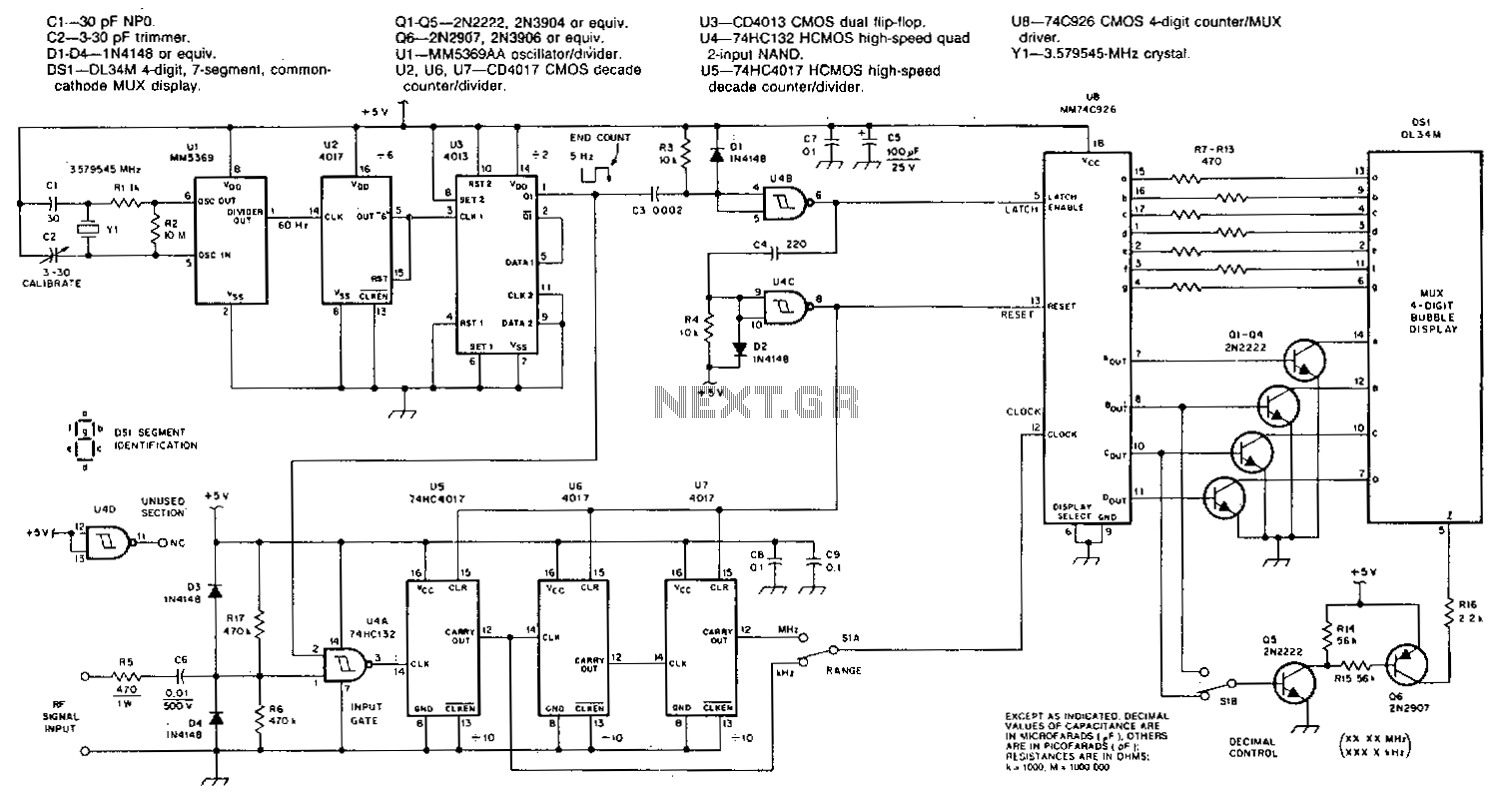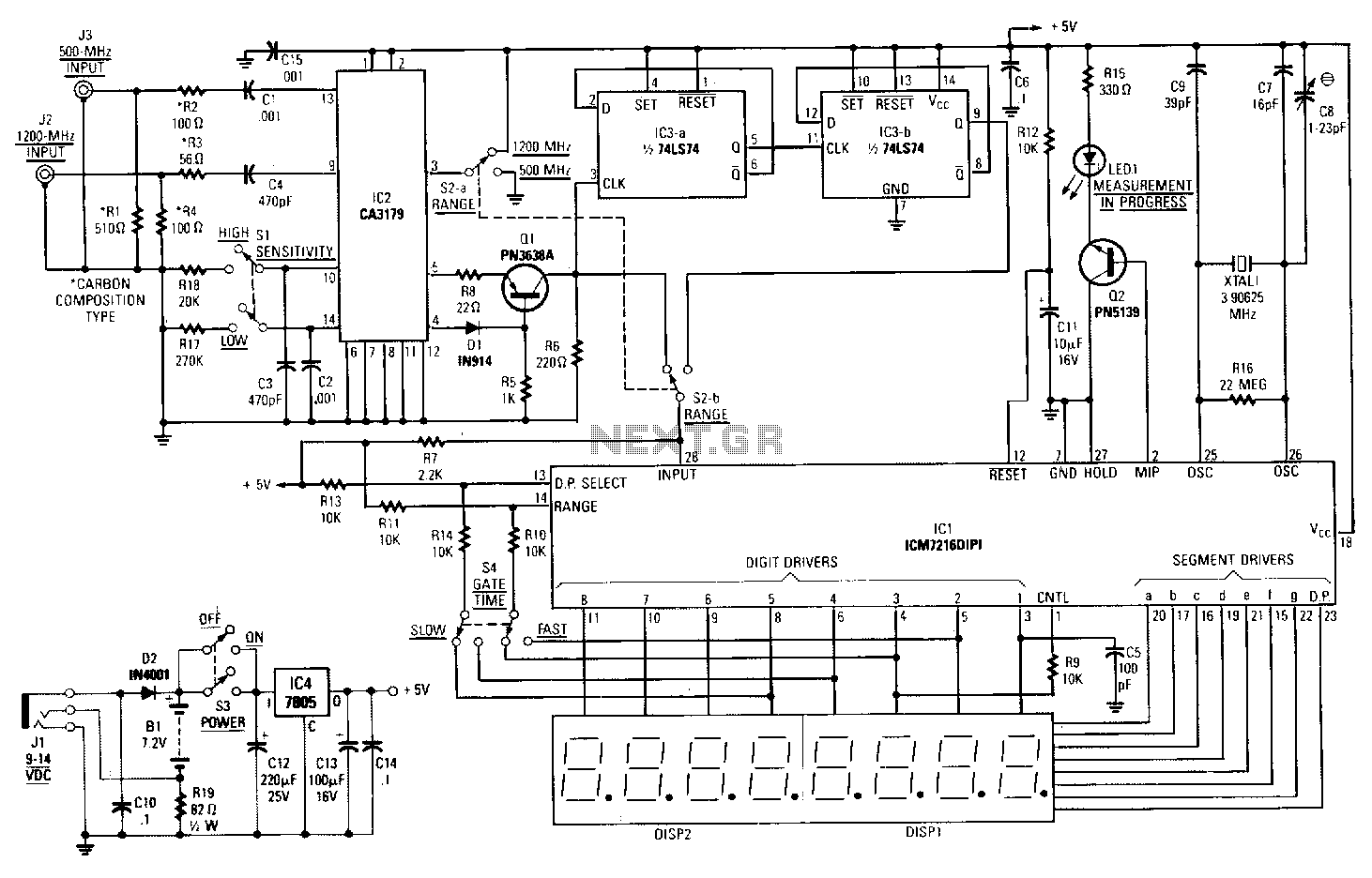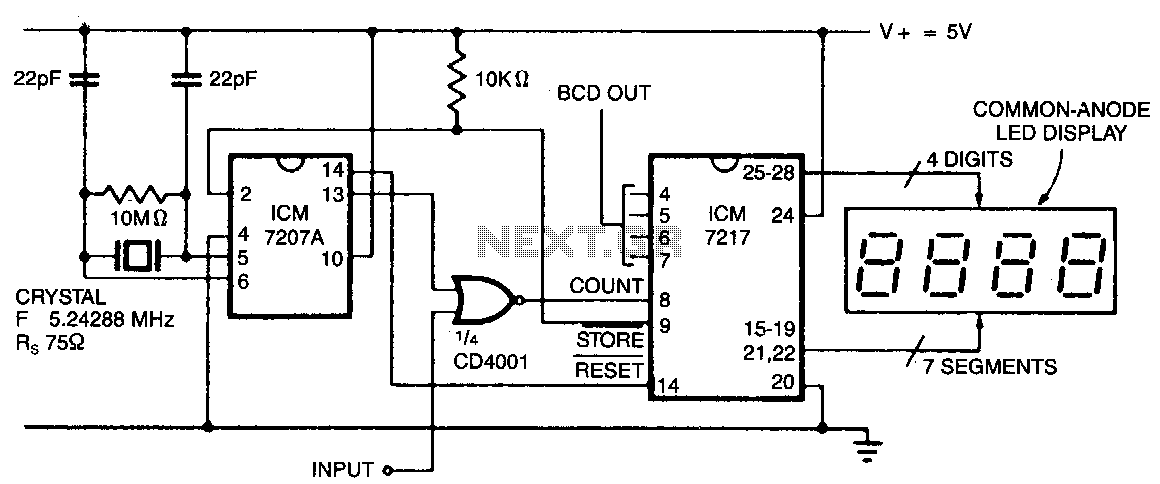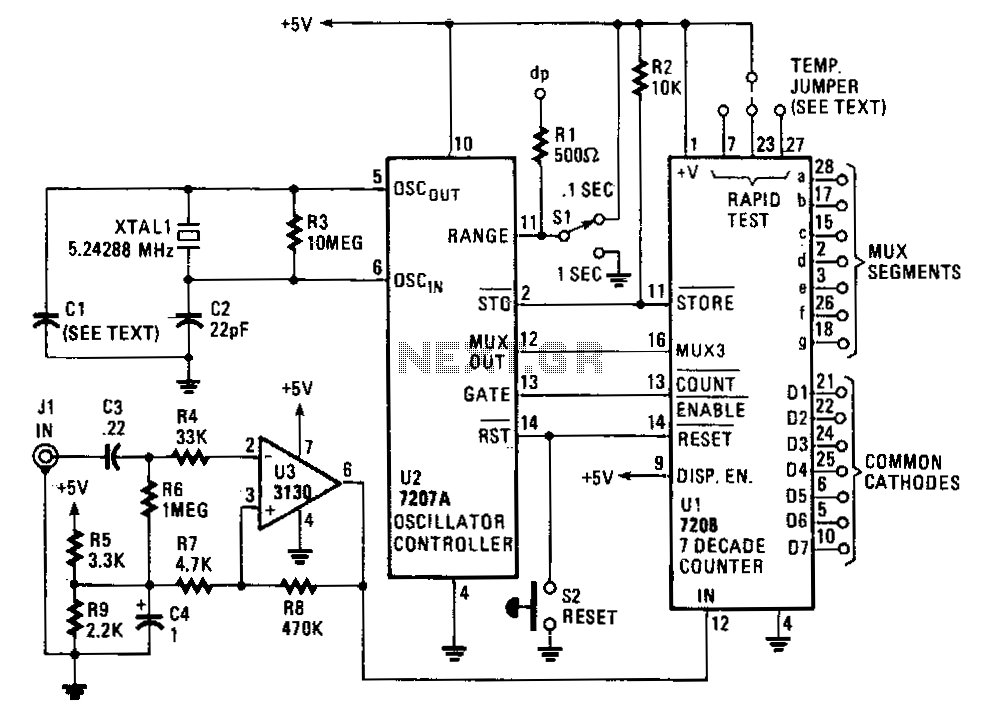
Frequency-counter
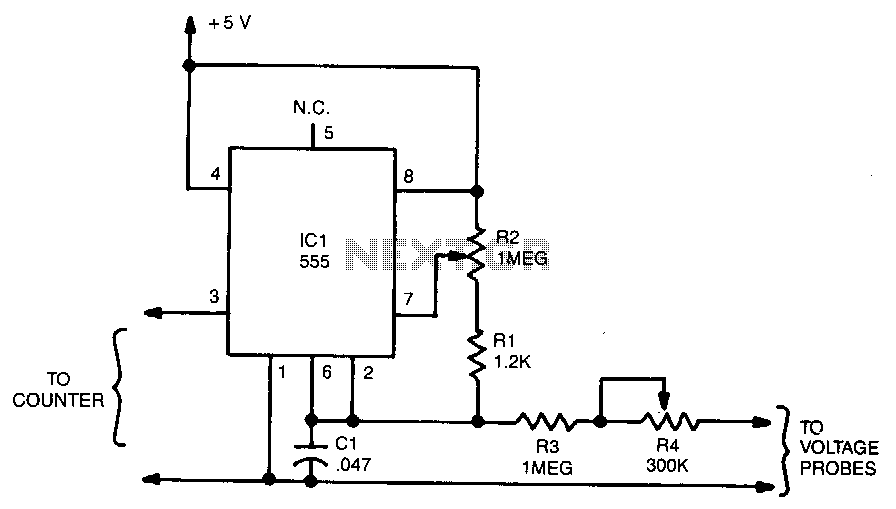
The output frequency from IC pin 3 is determined by the voltage input to pin 6. A standard frequency counter can be used to measure voltages directly over a limited range from 0 to 5 V. In this circuit, the 555 timer is configured as an astable multivibrator. Resistor R2 determines the output frequency when the input to the circuit (the voltage measured by the voltage probes) is zero. R4 is a scaling resistor that adjusts the output frequency so that a change in the input voltage of 1 V will result in a change in the output frequency of 10 Hz. This occurs when the combined resistance of R3 and R4 is 1.2 MΩ. To calibrate, short the voltage probes together and adjust R2 until the reading on the frequency counter changes to 0 Hz. Then, use the voltage probes to measure an accurate 5-V source and adjust R4 until the frequency counter reads 50 Hz.
The described circuit utilizes a 555 timer configured in astable mode to generate a frequency output that correlates with an input voltage. The astable multivibrator operates continuously, producing a square wave output at pin 3. The frequency of this output is primarily influenced by the resistors R2, R3, and R4, as well as the voltage applied to pin 6.
In this configuration, R2 plays a critical role in determining the base frequency of the output when the input voltage is at its minimum (0 V). The resistance values of R3 and R4 are crucial for scaling the output frequency in response to variations in the input voltage. Specifically, R4 is designed to ensure that each 1 V increment in the input voltage results in a 10 Hz increment in the output frequency. This relationship is established when the combined resistance of R3 and R4 equals 1.2 MΩ.
Calibration of the circuit is essential for accurate frequency output. Initially, the voltage probes should be shorted, allowing for the adjustment of R2 until the frequency counter indicates a reading of 0 Hz. This step ensures that the circuit is correctly set to register no output frequency at the lowest input voltage. Subsequently, a precise 5 V source is measured using the voltage probes, and R4 is adjusted to achieve a frequency counter reading of 50 Hz. This calibration process aligns the output frequency with the expected changes in input voltage, ensuring reliable performance across the specified range.
Overall, this circuit design is effective for applications requiring voltage-to-frequency conversion, allowing for easy measurement and monitoring of varying voltage levels through frequency changes.The output frequency from IC pin 3 is determined by the voltage input to pin 6. A standard frequency counter can be used to measure voltages directly over a limited range from 0 to 5 V. In this circuit, the 555 is wired as an astable multivibrator. Resistor R2 oetermines the output frequency when the input to the circuit (the voltage measured by the voltage probes) is zero.
R4 is a scaling resistor that adjusts the output frequency so that a change in the input voltage of 1 V will result in a change in the output frequency of 10 Hz. That will happen when the combined resistance of R3 and R4 is 1.2 MO. To calibrate short the voltage probes together, adjust R2 until the reading on the frequency counter changes to 00 Hz. Then, use the voltage probes to measure an accurate 5-V source and adjust R4 until the frequency counter reads 50 Hz.
The described circuit utilizes a 555 timer configured in astable mode to generate a frequency output that correlates with an input voltage. The astable multivibrator operates continuously, producing a square wave output at pin 3. The frequency of this output is primarily influenced by the resistors R2, R3, and R4, as well as the voltage applied to pin 6.
In this configuration, R2 plays a critical role in determining the base frequency of the output when the input voltage is at its minimum (0 V). The resistance values of R3 and R4 are crucial for scaling the output frequency in response to variations in the input voltage. Specifically, R4 is designed to ensure that each 1 V increment in the input voltage results in a 10 Hz increment in the output frequency. This relationship is established when the combined resistance of R3 and R4 equals 1.2 MΩ.
Calibration of the circuit is essential for accurate frequency output. Initially, the voltage probes should be shorted, allowing for the adjustment of R2 until the frequency counter indicates a reading of 0 Hz. This step ensures that the circuit is correctly set to register no output frequency at the lowest input voltage. Subsequently, a precise 5 V source is measured using the voltage probes, and R4 is adjusted to achieve a frequency counter reading of 50 Hz. This calibration process aligns the output frequency with the expected changes in input voltage, ensuring reliable performance across the specified range.
Overall, this circuit design is effective for applications requiring voltage-to-frequency conversion, allowing for easy measurement and monitoring of varying voltage levels through frequency changes.The output frequency from IC pin 3 is determined by the voltage input to pin 6. A standard frequency counter can be used to measure voltages directly over a limited range from 0 to 5 V. In this circuit, the 555 is wired as an astable multivibrator. Resistor R2 oetermines the output frequency when the input to the circuit (the voltage measured by the voltage probes) is zero.
R4 is a scaling resistor that adjusts the output frequency so that a change in the input voltage of 1 V will result in a change in the output frequency of 10 Hz. That will happen when the combined resistance of R3 and R4 is 1.2 MO. To calibrate short the voltage probes together, adjust R2 until the reading on the frequency counter changes to 00 Hz. Then, use the voltage probes to measure an accurate 5-V source and adjust R4 until the frequency counter reads 50 Hz.
